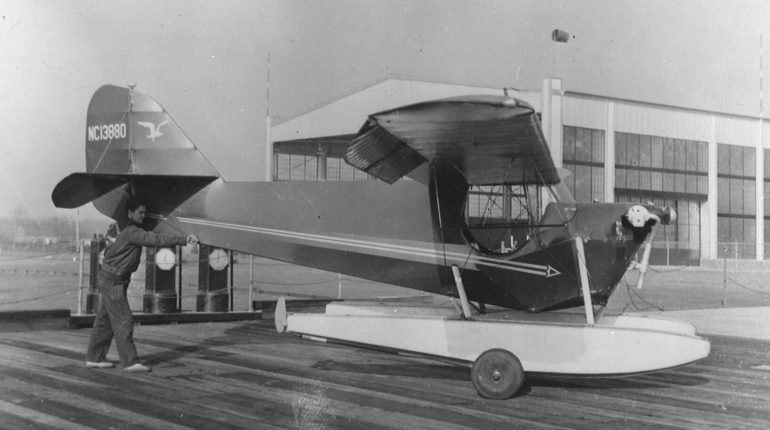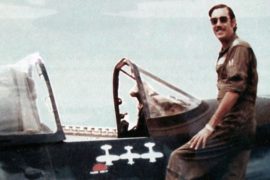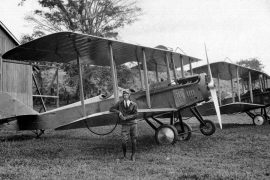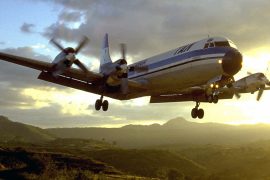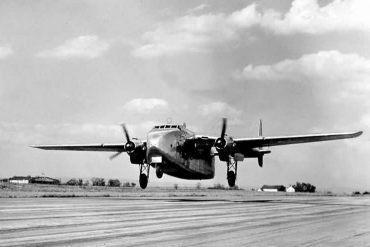The vast majority of the historical events documented in this website involve stout, built-for-purpose aircraft that most of us recognize and, even though often presented in surprising settings and circumstances, serve to broaden our basic understanding of these same events.
From time to time, however, we come across truly obscure bits and pieces that, even though bit players in the greater scheme of things, prove nonetheless interesting and part of the overall mosaic. Such may well be the case of a diminutive Aeronca C-3, U.S. civil registration NC16564.
For readers not familiar with the C-3, it was one of the most widely built private aircraft in the United States prior to December 7, 1941. Although the aircraft could only be called pretty by a proud owner, it offered an affordable, introductory level of practical flight to a surprising number of owners and student in the 1930s, all of the power of an Aeronca E-113, 36hp engine.
In theory a two-place aircraft (with a passenger that you got to know really well), most had only the most rudimentary of instrumentation and, when equipped with floats as the PC-3, they were lucky to break the surface of the water with just the pilot and standard fuel load of a modest eight gallons – although an auxiliary tank of another eight gallons could be added.
By August 1936, hundreds of C-3s had been produced at the Lunken Field, Cincinnati, Ohio factory, and most sold for around $1,790 new. One of these was Manufacturer’s Serial Number A-701, which gained U.S. Registration NC16564 on August 22nd, sold new to one Carl F. Evers of North Beach Airport, Jackson Heights, Long Island, New York.
By all appearances, Evers was an ordinary buyer. However, on February 3, 1937, he somehow arrived, flying his float-equipped PC-3, over the coast of Honduras which, in itself, was a truly remarkable feat of airmanship. The PC-3, on a really good day, with full load, had a still-air range of just over 200 miles. This meant that Evers, who, it was learned, was actually Karl Evertz, a naturalized U.S. citizen born in Germany, had somehow navigated his diminutive aircraft in 200 mile increments, requiring at least four and possibly five refueling stops, all the way down the U.S. east coast, crossed to Havana, Cuba, then across the narrowest gap of the Caribbean to probably British Honduras, and then on to the vicinity of La Lima, Honduras, where he was sighted circling, apparently lost.
He apparently found his bearings using a hand-held Boy Scout compass, however, and headed north out of Honduran territory, and it was assumed that he was heading back for British Honduras. The next day, however, NC 16564 landed on the Rio Ulua close to La Lima, where he and the aircraft were promptly taken into custody by the local police.
His story was fascinating. He claimed that he had, until February, been doing photographic work around New York in his Aeronca, but the winter conditions obliged him to head south for warmer weather, and claimed to have settled on Honduras, where he planned to prospect for gold! Honduran government officials, however, strongly suspected that he was in the hire of revolutionary forces, and that he had in fact been hired to spirit General Justo Umaña into the country from British Honduras. Umaña, it will be recalled, was in fact a revolutionary leader who did indeed land a party on the north coast of Honduras on February 1, 1937, with the intent of overthrowing the sitting government. They additionally charged that Evertz had specifically come to the country with his Aeronca to obtain some $1,500 in U.S. currency which was needed by the revolutionaries to liberate a consignment of arms and ammunition which they hoped to ship to Honduras from Puerto Obispo, Mexico.
Although no known photos of NC16564 exist, it was painted in a factory issued color scheme identical to that shown on the image of NC13880 at the top of this narrative, equipped with Edo 990 floats.
Was the appearance of Evertz and his Aeronca in Honduras within a day of the revolutionary expedition landing a coincidence? Was the fact that he had obtained no foreign flight authorization clearance from the U.S. State Department an oversight or an intentional evasion? Was the fact that he was apparently the subject of an FBI investigation a coincidence? Whatever the true facts, this was an epic flight under extremely unusual circumstances, and an interesting footnote to aviation in Central America during the mid-1930s.

